In 1939, amidst a country preparing itself for war, plans were being created to deal with the expected aerial bombardment from the Luftwaffe. As part of this, thousands of schoolchildren were exacuated from the busy cities and found themselves whisked away to much greener pastures. Some London kids had never seen a cow before, let alone lived in the countryside. Many camps were thrown up around the country to act as boarding schools, with two erected around the village of Sonning Common, north-west of Reading. They were called Kennylands Camp School, and Bishopswood Camp School. These two camps became a huge success, on the 30th of September 1940, Kennylands camp had a visit from the Royal family, and Even Lord Haw Haw; the German propaganda broadcaster got wind of the camp, making remarks about the poor quality of the fish the kids were eating there. The schools ran extremely well over the war years, and even much past that. They seemed to have faded away in the mid 1950's. Kennylands camp was demolished in the 1980's to make room for a care home, whilst the playing fields have recently been bought as a nature reserve for the locals. Bishopswood Camp was partially demolished, with several buildings going up on site (which are now demolished), one area became the Bishopswood School (primary) whilst the majority of the site is now playing fields. A small area of the camp has been left to rot as the woodlands slowly enveloped it. If it wasn't for this, there would be almost no evidence of it's existence.
Kennylands Camp has been somewhere I have driven past, day in, day out since 1992. I have always had some kind of attraction to the site, and have dropped my little sister off to teach gymnastics at the club more times than I could remember. It was only yesterday after research finally paid off and I found out what the site was used for, I thought I'd actually get off my arse and have a look using my own eyes rather than Google's.
Travelling by bike, for once,rather than in the car I noticed a mound in the bushes beside the road. My eyes widened as I imagined what I could have found. I almost dismissed it, until I saw the tell tale lump of concrete over what was an air raid shelter escape hatch.
The mound. The only real giveaway was the small path leading over it.
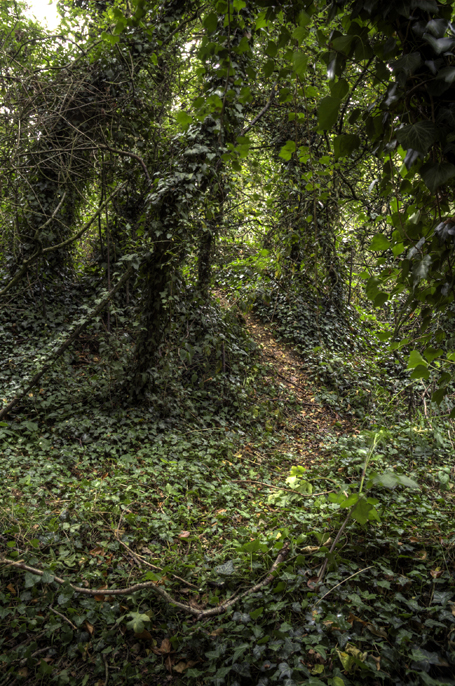
The hatch, half capped and covered in ivy.
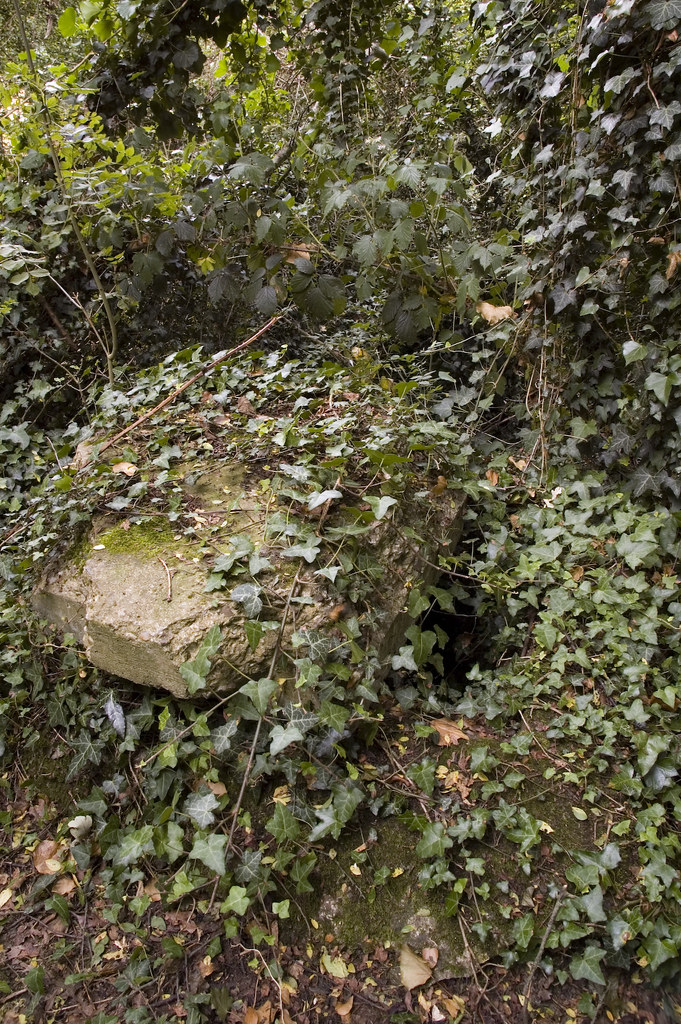
The escape hatch was full of rubbish, almost to the brim. I went a bit crazy clearing the undergrowth around the shelter and discovered the main entrance. Again, this was stuffed full of all manners of crap, from bicycles to bricks.
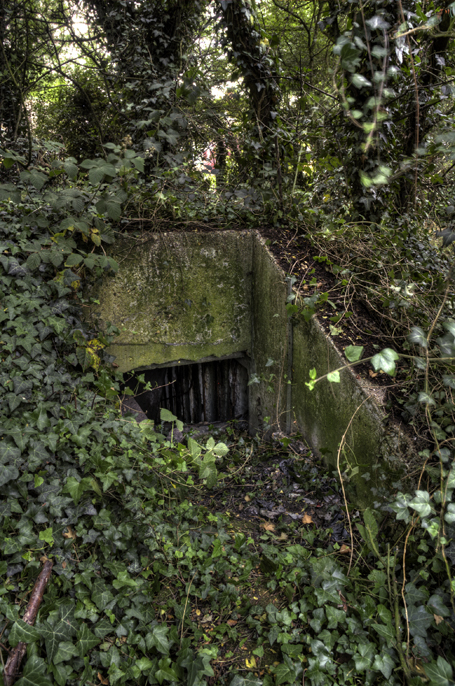
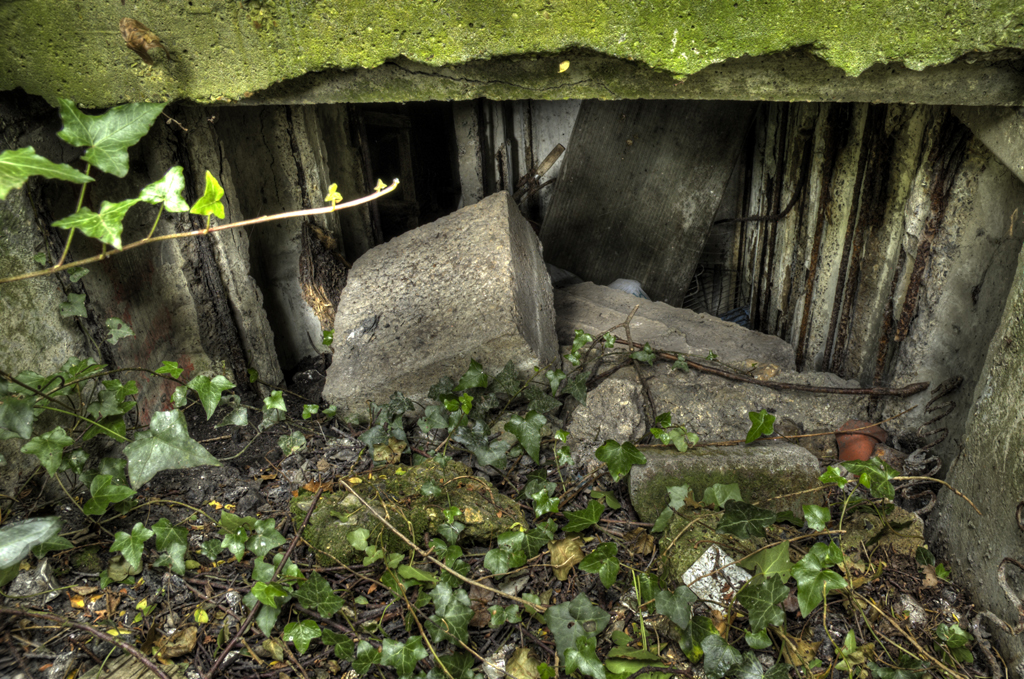
I then had my camera battery die, I left the spares in a different bag so back home I went. A short while later, I thought I may as well check it out from the inside so crawled into the small hole. I was expecting it to be full of junk, but not FULL of junk!! It was almost up to the ceiling so I couldn't (be arsed to) go any further. It seems this shelter has doubled up as the local skip.
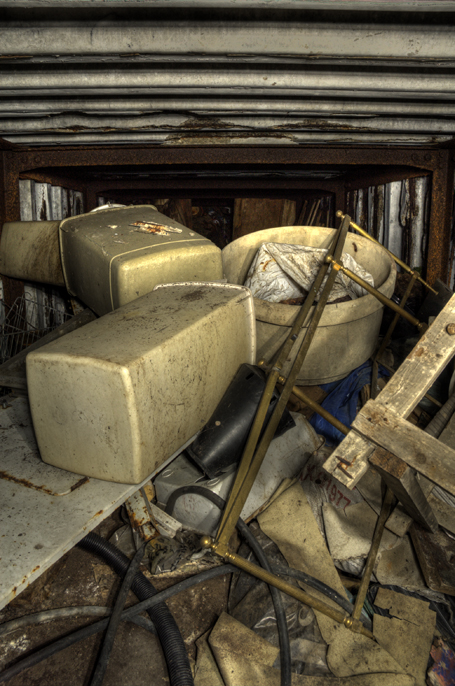
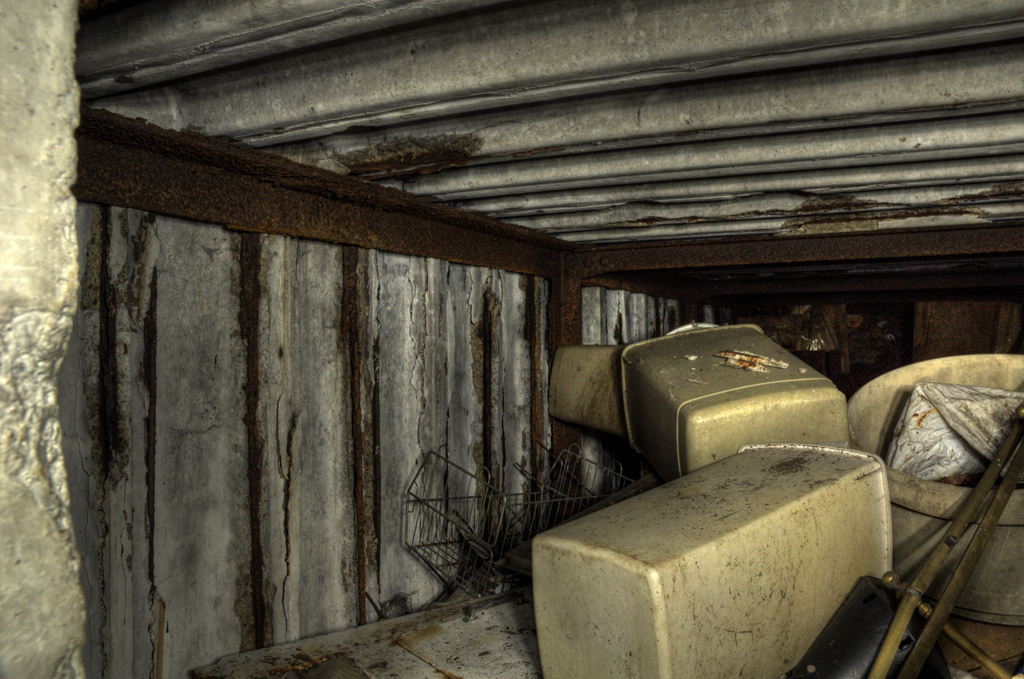
300-350 pupils attended the school during the war, housed in five large dorms. They were mostly from the Beal School in Ilford, essex. All these kids plus staff couldn't have fit inside one single shelter, so there must have been more. There are several mounds near the gymnastics club which could be more shelters, but the mounds are all landscaped and grassed over, so I may never find out. After a good half hour spent cycling around the rest of the site I have concluded that this is the only visible remanant of the site. New housing being built less than ten metres away may have destroyed any other buildings, if any were left.
I was quite chuffed with this, despite the fact it's f**ked, it's only a mile away from my house and I never had a clue. It goes to show, getting the bike out and simply exploring your area really can pay off.
Bishopswood camp is somewhere I have been plenty of times. It took me several years to find out that the place was a school. There was absolutely no references of it on the internet until it was recorded on www.pastscape.com- A great resource. The remaining bits and bobs on the ste are mainly bases for the red cedar huts. There are some chimneys left from these and a semi submerged air raid shelter. The land surrounding these used to be open but since the site fell disused the neighbouring woodland has taken it over. Near the entrance, which is now on a footpath, it looks like there would have been a water feature but there are few remains. Generations of people have dumped various loads of junk including shoes, a go kart, furniture and the odd dolls head has been half buried in the ground, facing upwards in a grim stare.
The main building left is a brick structure. It took me a while to figure out what it was for, but I have come to the conclusion that it was some form of water treatment plant. Joined on to the rear of the building is a large, raised circular pit, it looks like sewage treatment, although there is a specialised sewage treatment site in a nearby field, also disused. There is also a large bick lined square pit infront of the building.
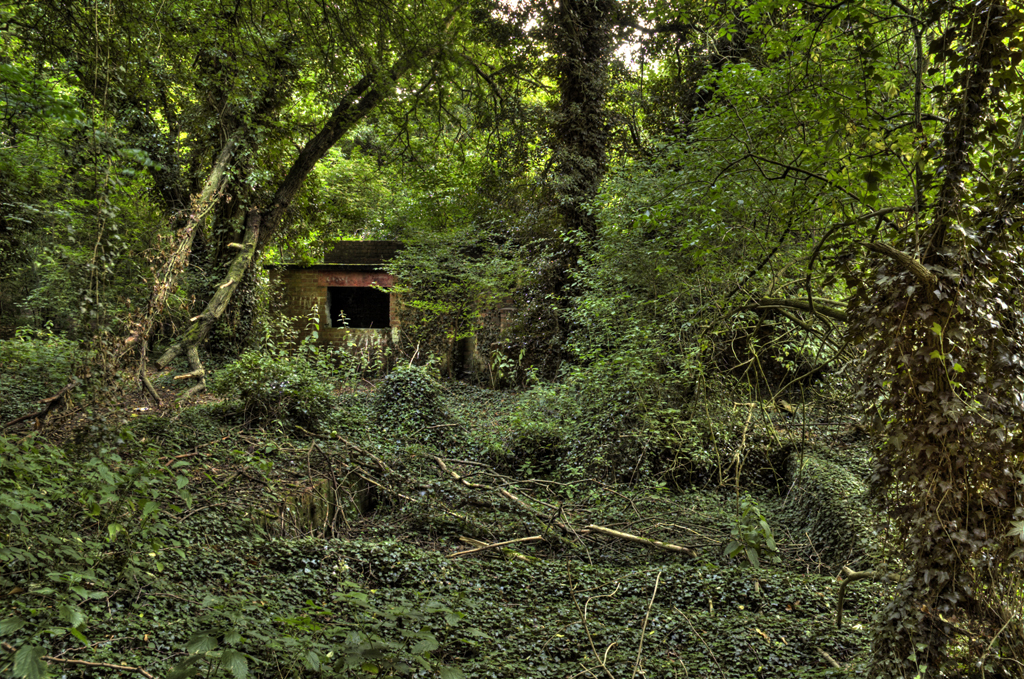
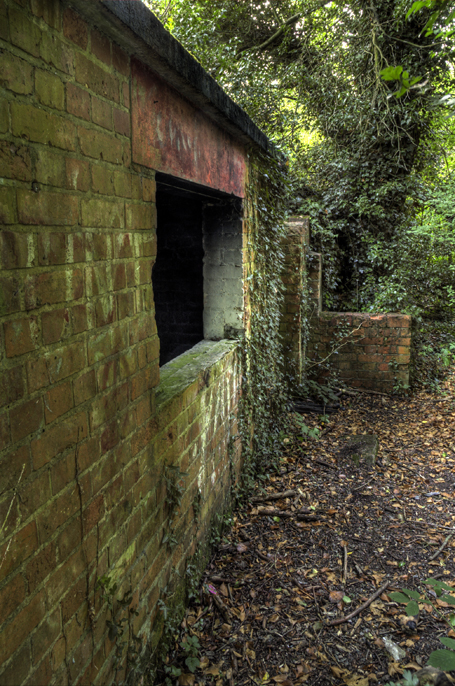
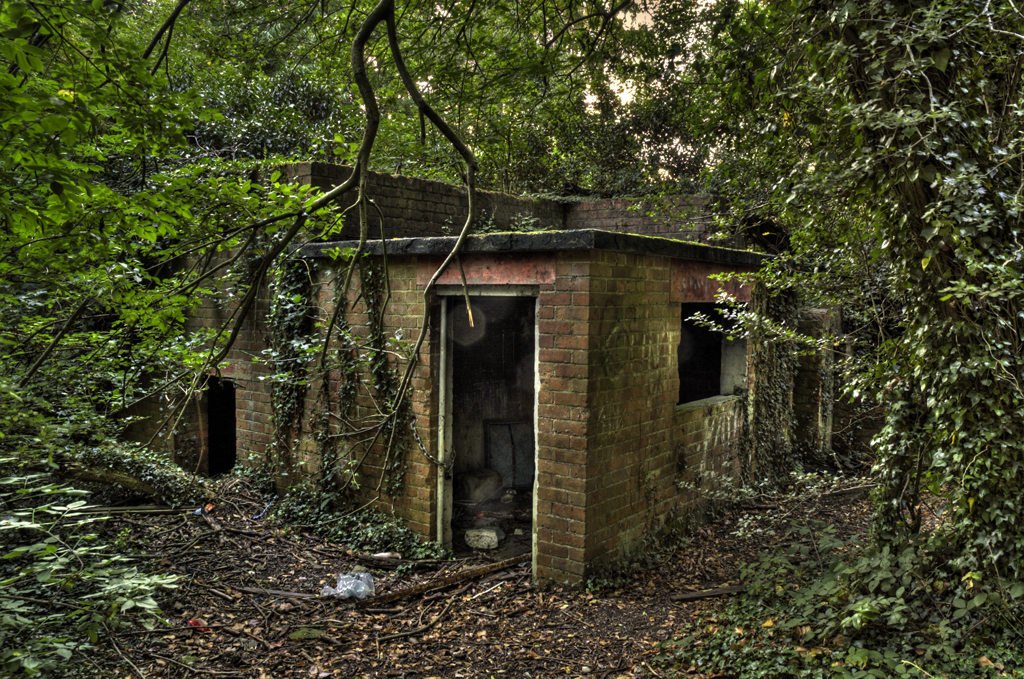
Inside the building there is a plinth for a generator or other plant.
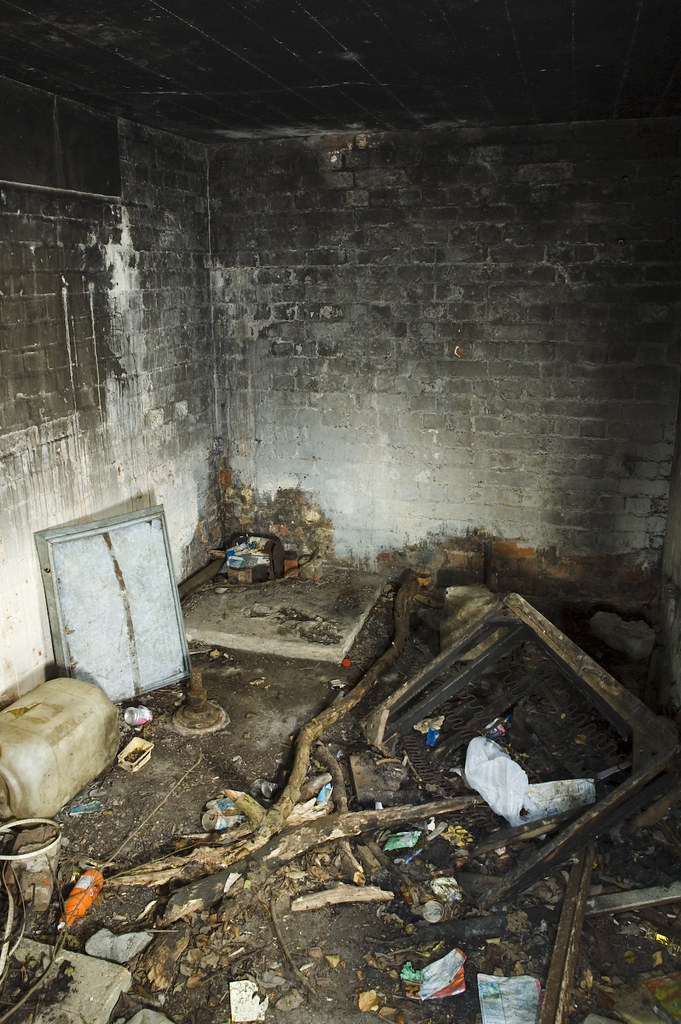
Twenty metres away is the air raid shelter. This is a small stanton type structure, although the concrete doesn't appear to be pre cast.
The number one painted on the entrance leads me to believe there are/were more shelters here but plenty of hunting has not revealed any.
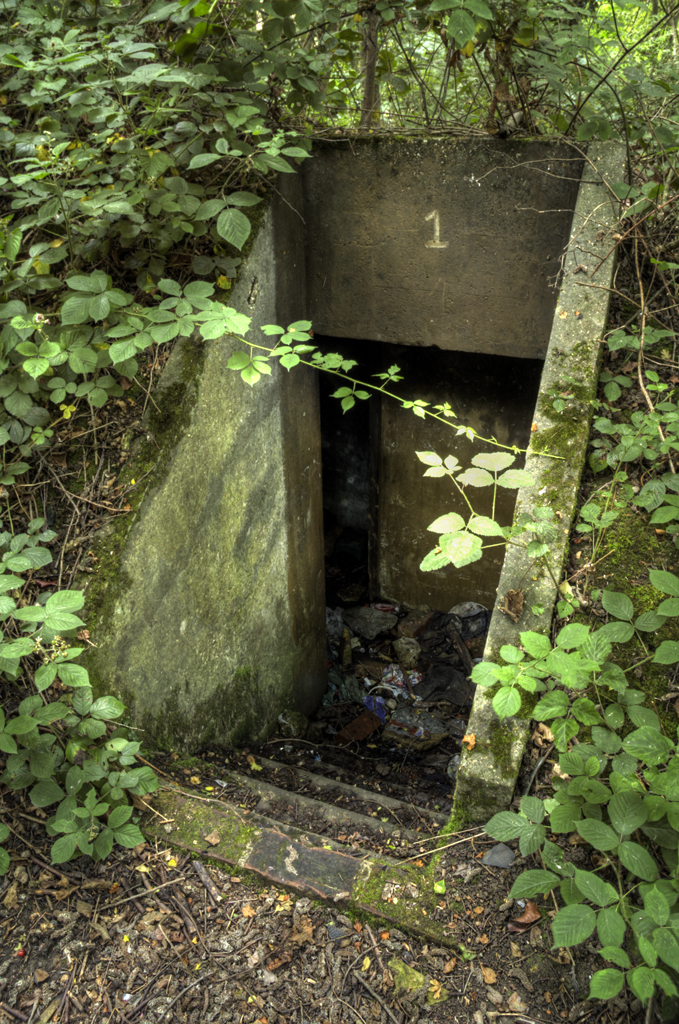
A small partition used to divide the shelter, near the hatch. This was knocked through at some point.
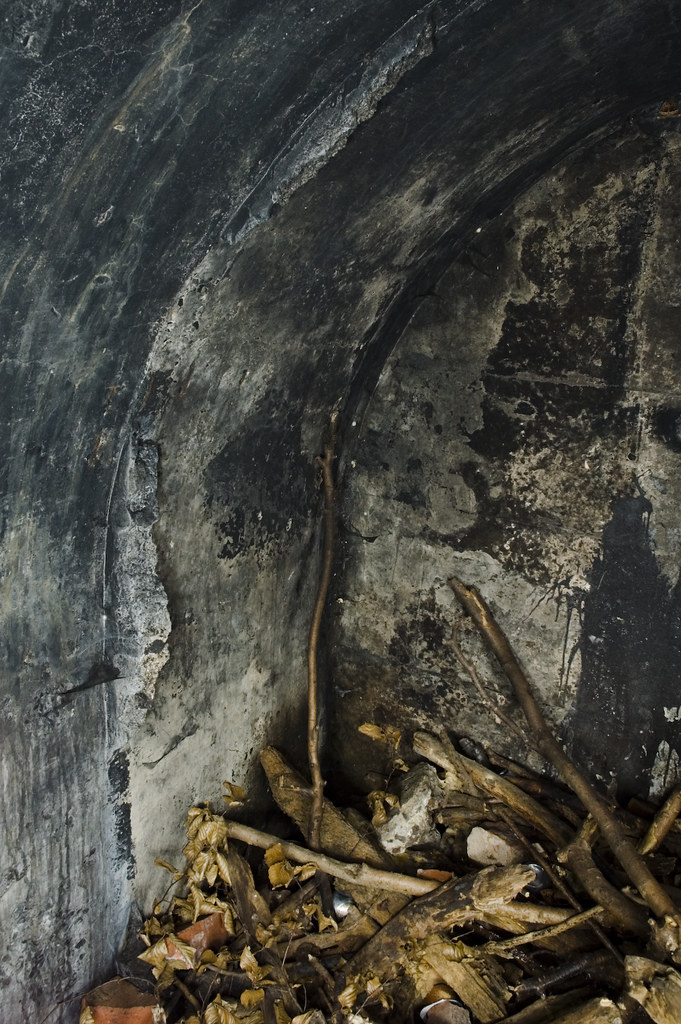
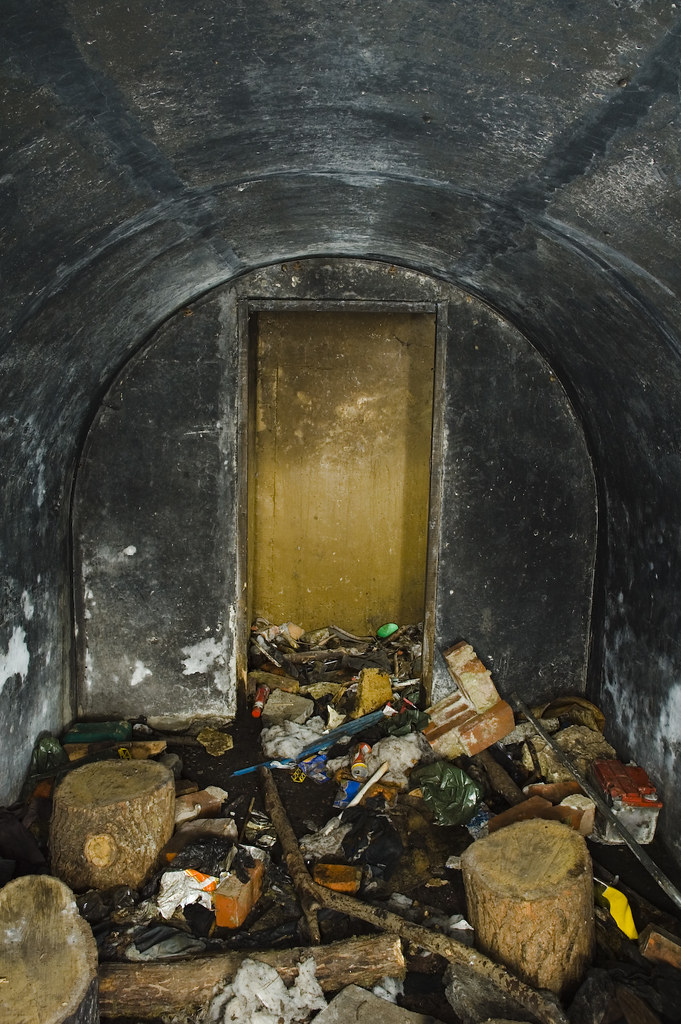
It has obviously been burnt out. I remember it used to have the same brown khaki paint throughout.
It looks like the next load of firewood is being built up.
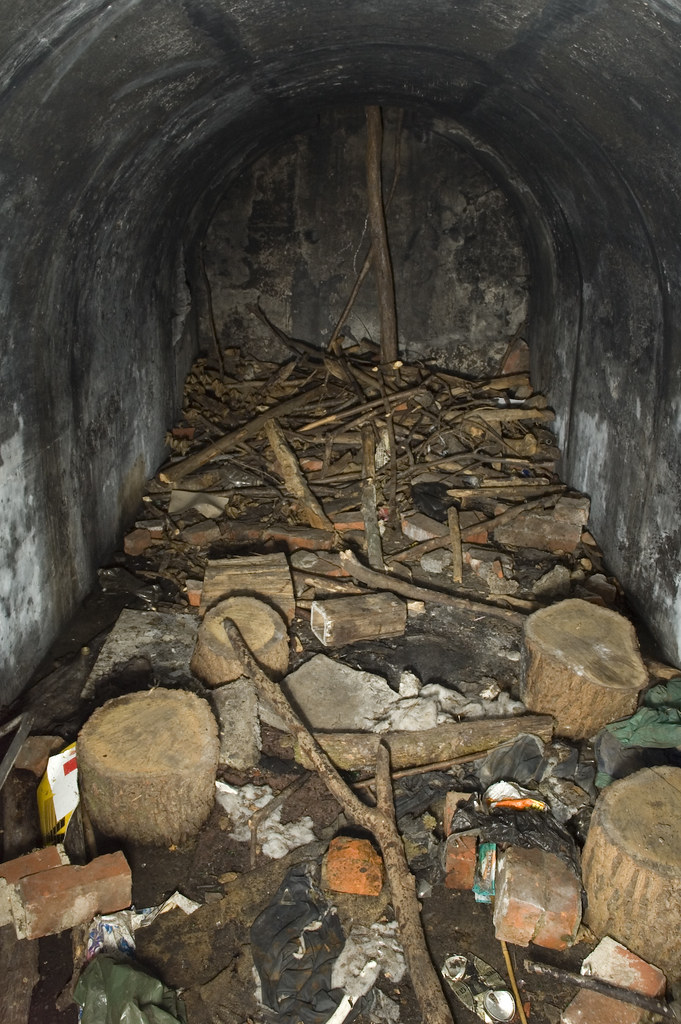
The shelter's entrance is much clearer than the other's.
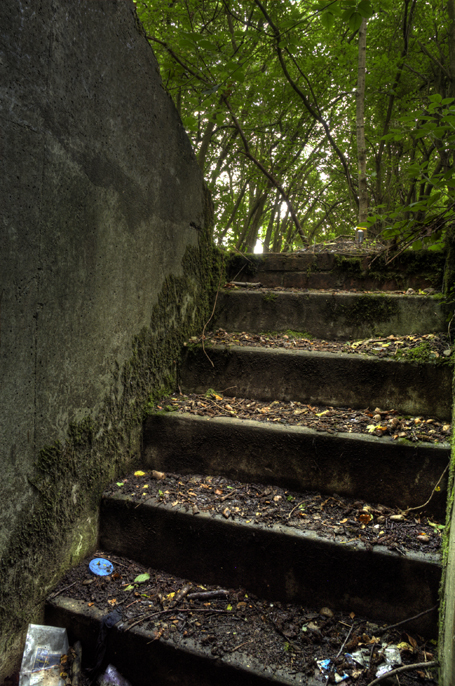
Looking up to the capped hatch. The shelter must have been sealed at one point as there have been attempts to breach through the concrete.
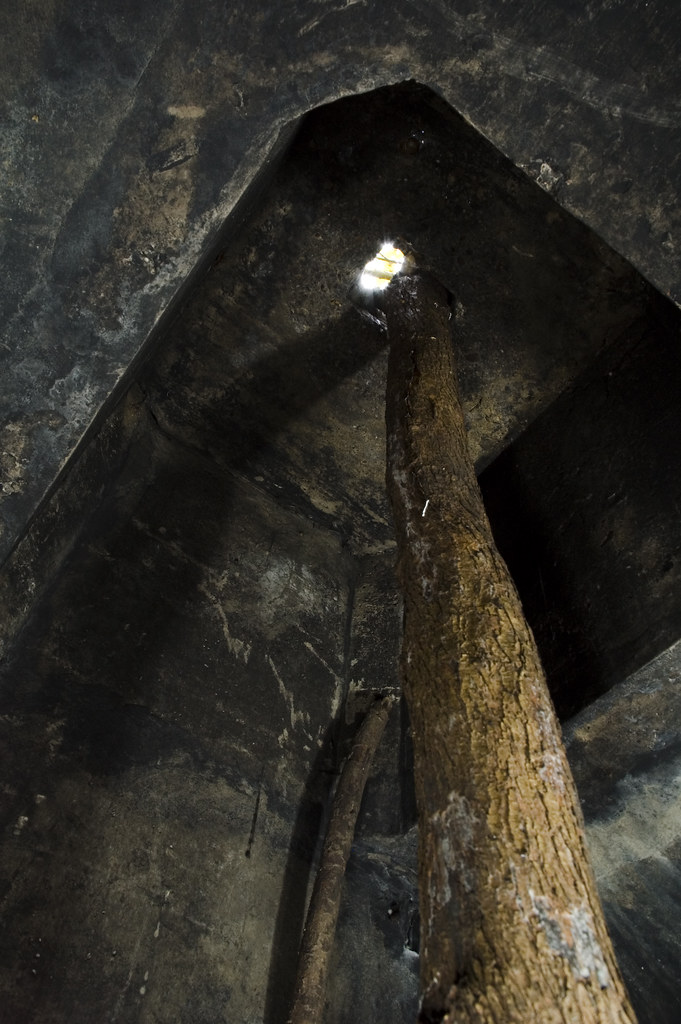
The outside of the hatch
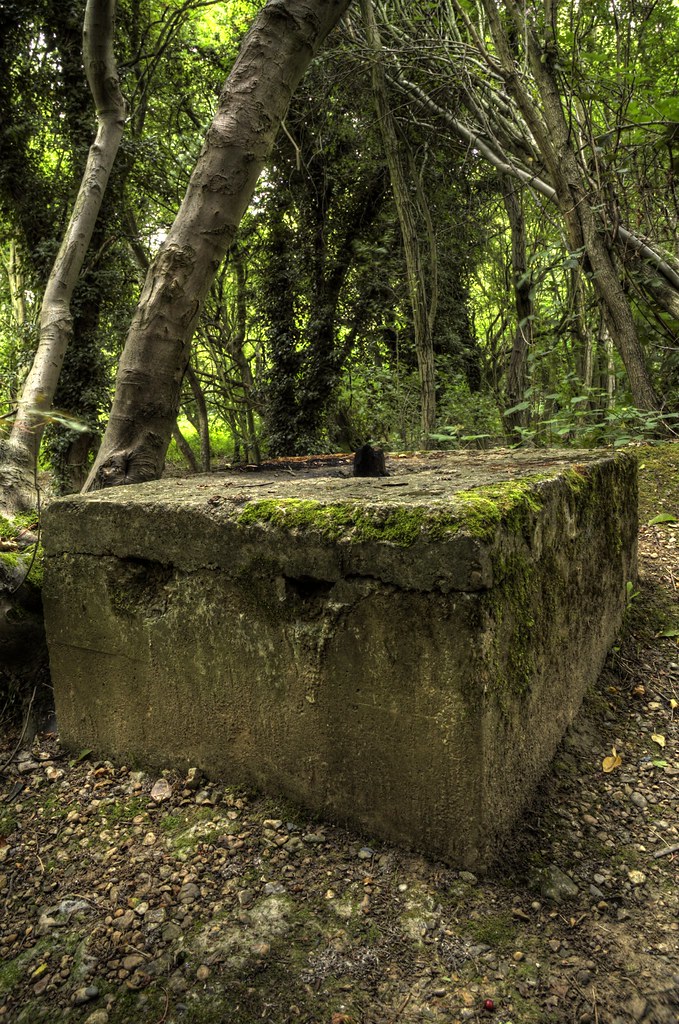
There are several remaining chimneys about the site. These would have been built into the end of the dormitory huts. The huts have now rotted away to leave the brickwork and concrete.
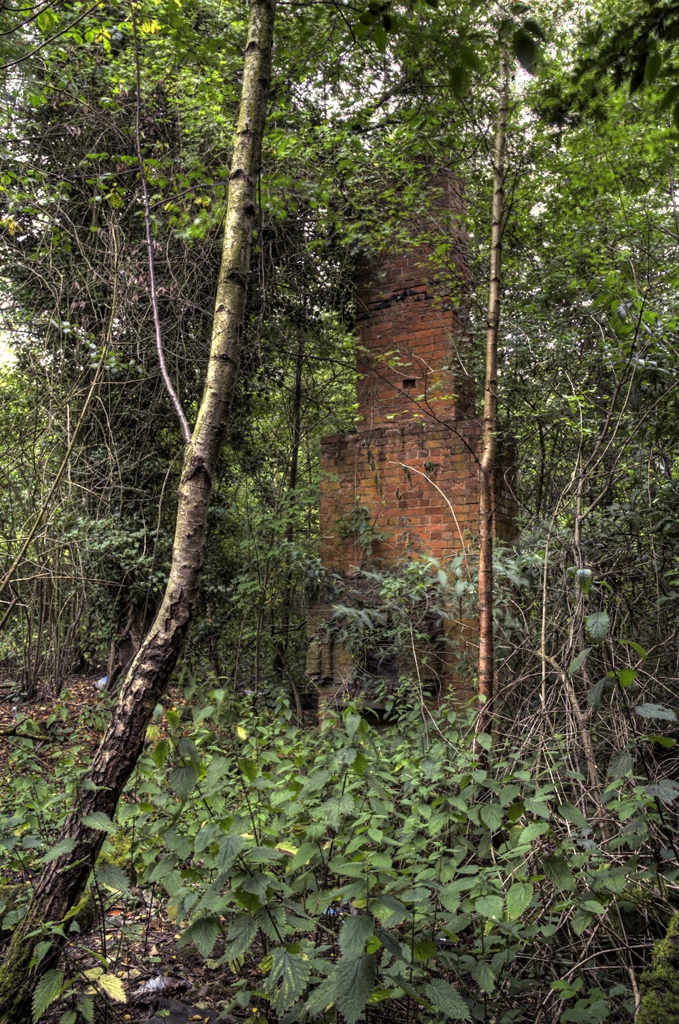
One in particular is a bit more fancy than the rest. This makes me think it may have been the chapel.
Plenty of drains are hidden in the leaves, some nasty injury waiting to happen.
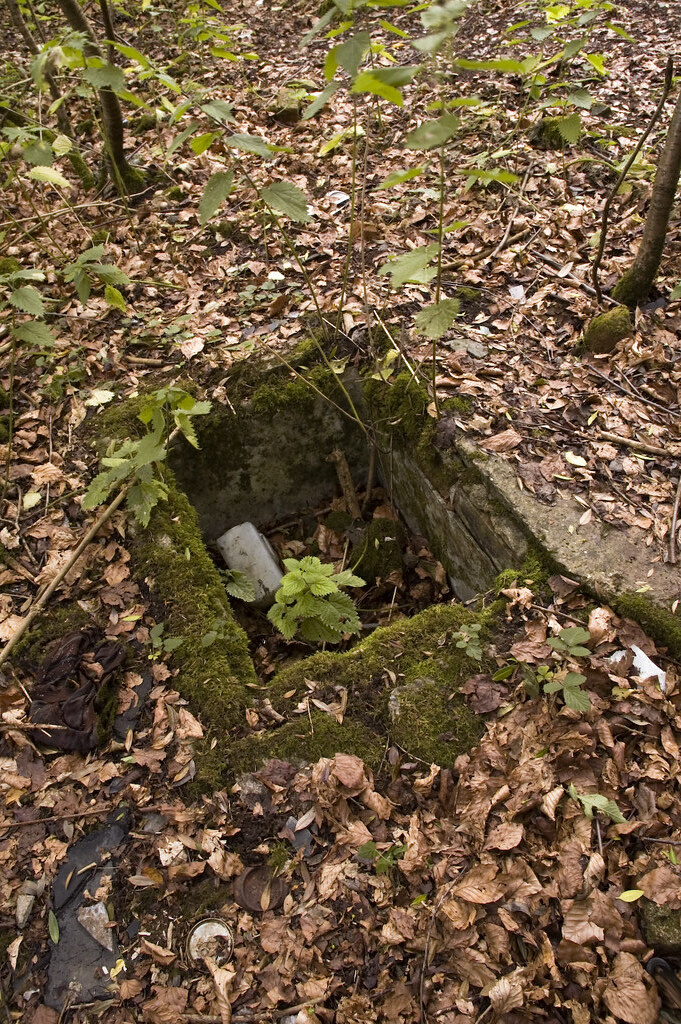
One thing that confuses me is this, a brick square built up off the ground, topped with a reinforced conrete slab. It is about 2ft tall, but looks like it's been taken out with explosives. I have wondered if it was access to another, different design of shelter, but I'm thinking it is most likely just a bed for a water tank.
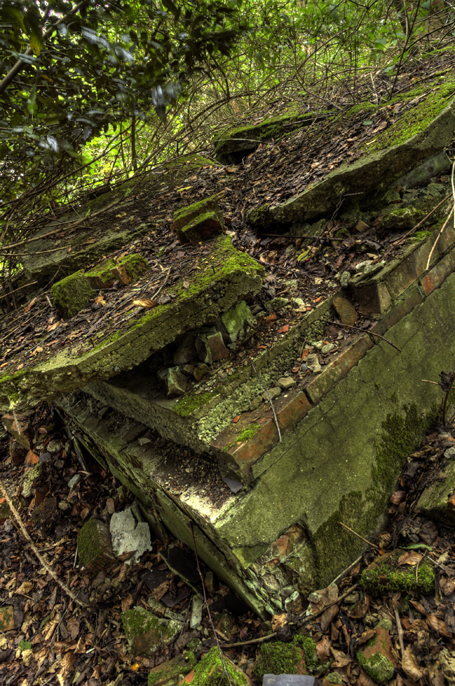
Another thing that really confused me was the date in this set of steps. It looked to have been written when the concrete was still wet. After studying 1940's aerial photographs I have determined these huts must have been erected later on, as they are not visible on the photos, so maybe the date is original.
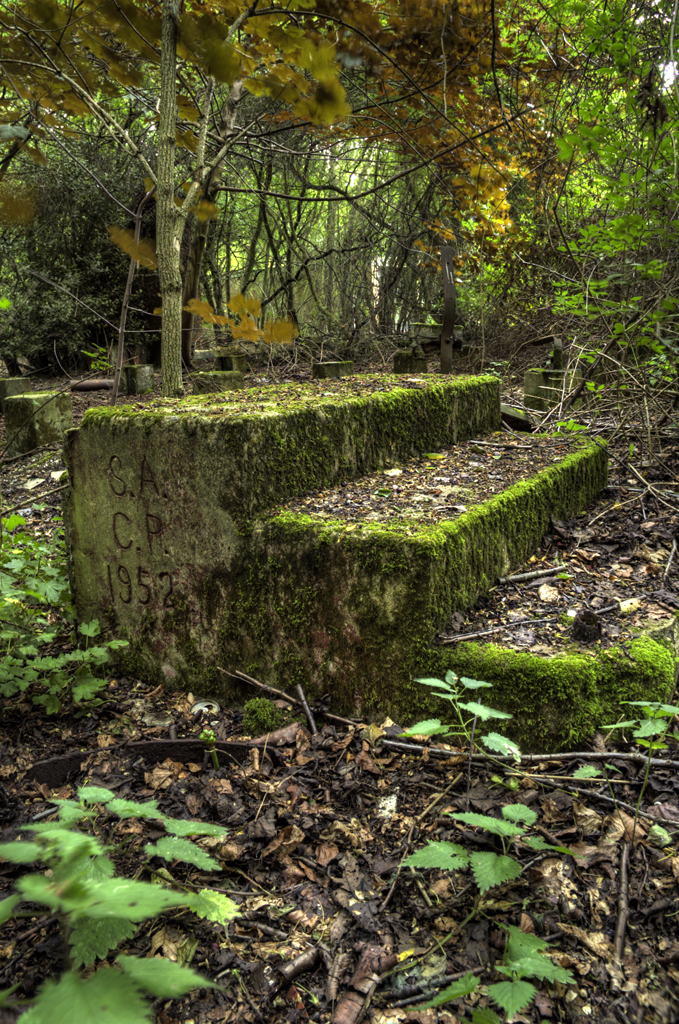
Kennylands Camp has been somewhere I have driven past, day in, day out since 1992. I have always had some kind of attraction to the site, and have dropped my little sister off to teach gymnastics at the club more times than I could remember. It was only yesterday after research finally paid off and I found out what the site was used for, I thought I'd actually get off my arse and have a look using my own eyes rather than Google's.
Travelling by bike, for once,rather than in the car I noticed a mound in the bushes beside the road. My eyes widened as I imagined what I could have found. I almost dismissed it, until I saw the tell tale lump of concrete over what was an air raid shelter escape hatch.
The mound. The only real giveaway was the small path leading over it.

The hatch, half capped and covered in ivy.

The escape hatch was full of rubbish, almost to the brim. I went a bit crazy clearing the undergrowth around the shelter and discovered the main entrance. Again, this was stuffed full of all manners of crap, from bicycles to bricks.


I then had my camera battery die, I left the spares in a different bag so back home I went. A short while later, I thought I may as well check it out from the inside so crawled into the small hole. I was expecting it to be full of junk, but not FULL of junk!! It was almost up to the ceiling so I couldn't (be arsed to) go any further. It seems this shelter has doubled up as the local skip.


300-350 pupils attended the school during the war, housed in five large dorms. They were mostly from the Beal School in Ilford, essex. All these kids plus staff couldn't have fit inside one single shelter, so there must have been more. There are several mounds near the gymnastics club which could be more shelters, but the mounds are all landscaped and grassed over, so I may never find out. After a good half hour spent cycling around the rest of the site I have concluded that this is the only visible remanant of the site. New housing being built less than ten metres away may have destroyed any other buildings, if any were left.
I was quite chuffed with this, despite the fact it's f**ked, it's only a mile away from my house and I never had a clue. It goes to show, getting the bike out and simply exploring your area really can pay off.
Bishopswood camp is somewhere I have been plenty of times. It took me several years to find out that the place was a school. There was absolutely no references of it on the internet until it was recorded on www.pastscape.com- A great resource. The remaining bits and bobs on the ste are mainly bases for the red cedar huts. There are some chimneys left from these and a semi submerged air raid shelter. The land surrounding these used to be open but since the site fell disused the neighbouring woodland has taken it over. Near the entrance, which is now on a footpath, it looks like there would have been a water feature but there are few remains. Generations of people have dumped various loads of junk including shoes, a go kart, furniture and the odd dolls head has been half buried in the ground, facing upwards in a grim stare.
The main building left is a brick structure. It took me a while to figure out what it was for, but I have come to the conclusion that it was some form of water treatment plant. Joined on to the rear of the building is a large, raised circular pit, it looks like sewage treatment, although there is a specialised sewage treatment site in a nearby field, also disused. There is also a large bick lined square pit infront of the building.



Inside the building there is a plinth for a generator or other plant.

Twenty metres away is the air raid shelter. This is a small stanton type structure, although the concrete doesn't appear to be pre cast.
The number one painted on the entrance leads me to believe there are/were more shelters here but plenty of hunting has not revealed any.

A small partition used to divide the shelter, near the hatch. This was knocked through at some point.


It has obviously been burnt out. I remember it used to have the same brown khaki paint throughout.
It looks like the next load of firewood is being built up.

The shelter's entrance is much clearer than the other's.

Looking up to the capped hatch. The shelter must have been sealed at one point as there have been attempts to breach through the concrete.

The outside of the hatch

There are several remaining chimneys about the site. These would have been built into the end of the dormitory huts. The huts have now rotted away to leave the brickwork and concrete.

One in particular is a bit more fancy than the rest. This makes me think it may have been the chapel.
Plenty of drains are hidden in the leaves, some nasty injury waiting to happen.

One thing that confuses me is this, a brick square built up off the ground, topped with a reinforced conrete slab. It is about 2ft tall, but looks like it's been taken out with explosives. I have wondered if it was access to another, different design of shelter, but I'm thinking it is most likely just a bed for a water tank.

Another thing that really confused me was the date in this set of steps. It looked to have been written when the concrete was still wet. After studying 1940's aerial photographs I have determined these huts must have been erected later on, as they are not visible on the photos, so maybe the date is original.



































